Written by Anthony Dawson, this hardback book measures around 246 cm x 172 cm, has 248 pages of text and 16-page section of illustrations. It was published by Pen & Sword in October 2020 at a price of £25, but at the time of writing it can be obtained online from Pen & Sword for £17.50 and from Amazon for £18.75.
With an Introduction and four parts, the book describes the day-to-day operations of the Liverpool & Manchester (L&M) Railway, including passenger and goods working, timetabling, signalling, and what happened when things went wrong.
Part 1, titled “The Passenger Business”, has nine chapters, and shows that this was an overnight success. We learn what the company did to accommodate the travelling public, including changing the times of trains, opening additional stopping places, and passing bye-laws to prevent nuisances such as smoking and drinking alcohol.
Part 2, titled “Carrying the Good (‘Luggage’), has six chapters describing the problems in carrying goods where the passenger business accounted for the bulk of the traffic. We see how passenger business overtook freight as the railway wasn’t suited to handling cotton which was high in volume but low in weight and was the mainstay of the railway’s heartlands. Coal was the railway’s ideal freight traffic, but despite initially operating its own coal trains, those were soon handed over to colliery owners.
Part 3, titled “Train Working and Timetables”, has three chapters and describes how separation between passenger and goods workings was achieved, even though the smooth running of the company’s trains was complicated by other companies and private collieries having running rights.
Part 4, titled “Rules and Regulations”, has seven chapters that describe the various aspects of operations which depended on adherence to a common set of Rules and Regulations. It includes a copy of the railway’s original Rules and Regulations dating from March 1839.
For me, this was the most interesting part of the book. It shows how the trains originally operated on a time interval system with 15 minutes between trains. Inevitably, that would have brought the system to a standstill, so the company opted for employing police constables using hand flags rather than mechanical signals as seen below. That system lasted until 1845, long after other railway companies started using mechanical signalling.
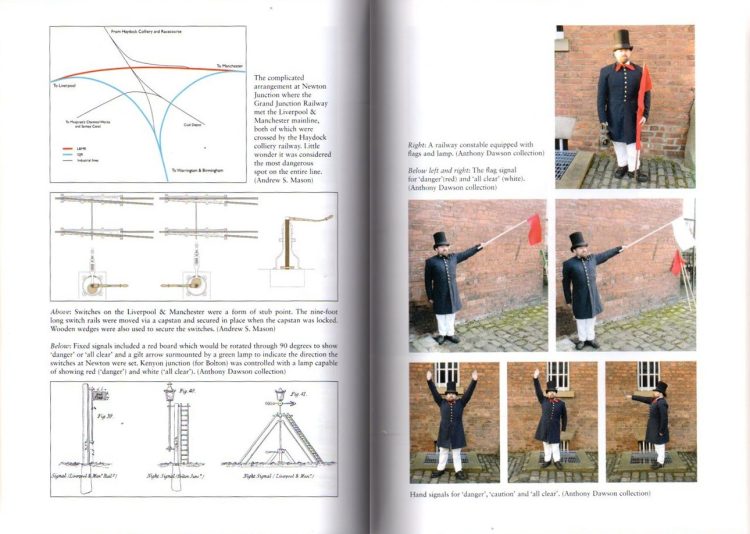
We find that illiterate staff had to have the rule book read to them at least once, begging the question how did they ever remember all the rules? There was even a bye-law forbidding the eating of Eccles Cakes. Derailments were treated as if they were the train crew’s fault, and if they weren’t reported immediately both engineman and fireman could be fined.
The author conveys well and in microscopic detail the trials and tribulations faced by those in authority at all levels within the company, and describes in great detail the sheer complexity of the undertaking. But the book seems unsure whether it is a narrative of the line’s history, or a reference book, as it overwhelms the reader with countless facts, anecdotes, and information – from the grand scale to the minutiae of daily life. In between, it paints a picture of how the railway actually operated, and more often than not, how it didn’t. The 50 pages devoted to a Bibliography and Index speak volumes for how much detail there is to be found.
The author has done well to source coloured illustrations that give a good impression of the railway at the time covered by the book.
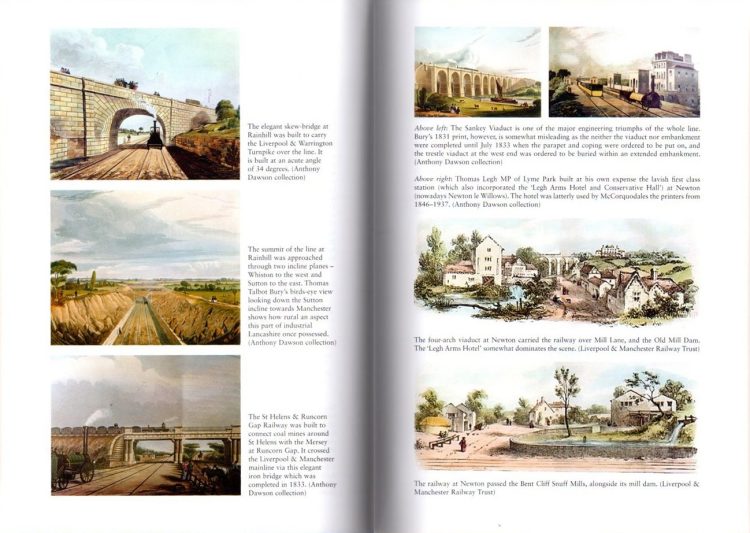
What could have been a superb volume has been let down by a couple of niggles. Given the overall dimensions of the book, four photographs to a page as in the example below, are simply too many. I appreciate that the author wished to include as many as possible, but as several of them are of similar scenes, it would have been better to sacrifice quantity for quality.
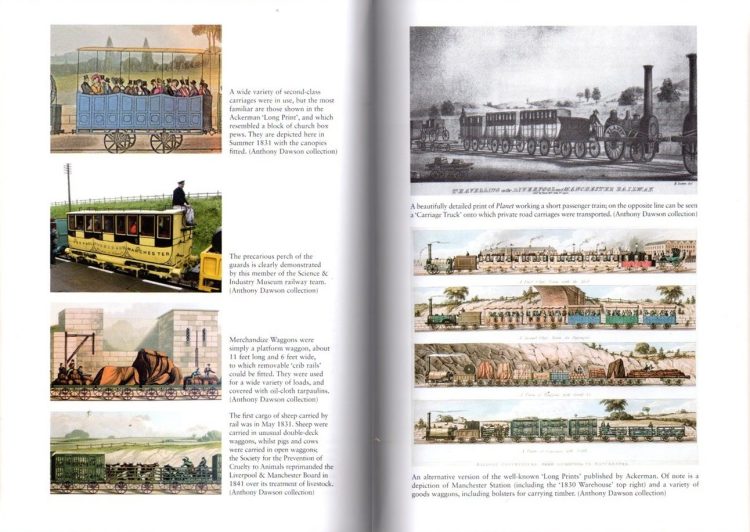
The book’s sister volume, Locomotives of the Liverpool and Manchester Railway, was printed entirely on gloss paper, which enhanced the content. In comparison, although the illustrations in this book are also printed on gloss paper, the text is on uncoated paper which rather detracts from the superb effort that the author has made.
A glaring error on page 28 describes travel by canal taking twice as long between Liverpool and Manchester as the railway. If that is correct, either the trains travelled incredibly slowly, or canal boats were being hauled by racehorses.
In summary, this book reflects the author’s in-depth research and love of his subject. It is a valuable insight into how the operation of railways developed from first principles. This book is highly recommended for those with an interest in the Liverpool & Manchester or anyone interested in the history of early railways.
The book is available to purchase from Amazon and from Pen & Sword.
We would like to thank Pen & Sword for providing RailAdvent with a copy of the book for review.


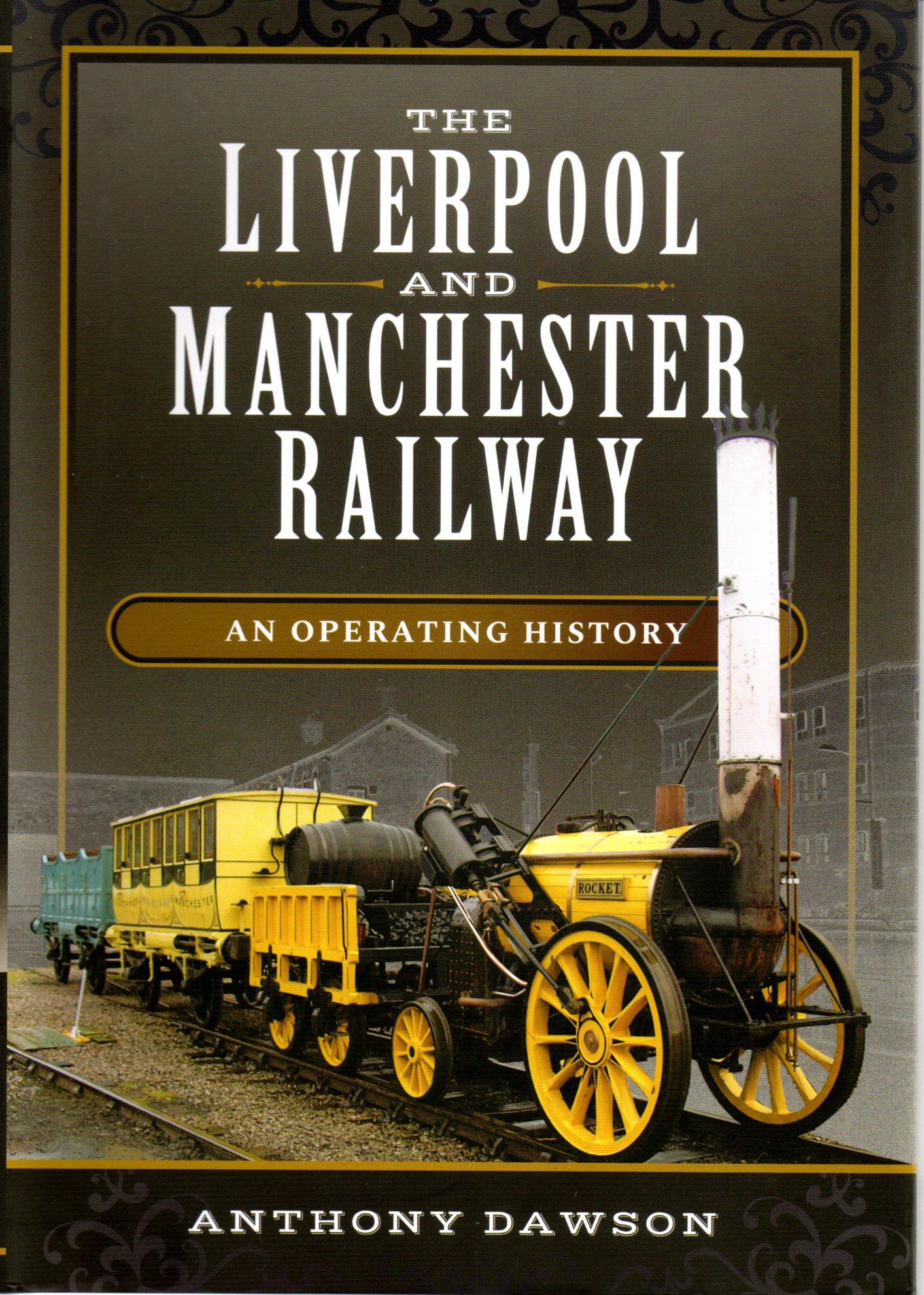

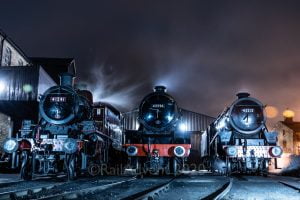

Responses
Great review, as a licenced boat skipper I can confirm the canal error. Even today it would take 14 to 15 hours. With a horse, a lot longer. The distance is however nearly twice, as long, for geographical, though mostly commercial reasons the Leeds and Liverpool Canal did not take the most direct route. The Manchester Ship Canal is the fastest route, at 5 to 6 hours, although of course, that was available in 1830. The canal system was also very busy and in reality, it could days to travel this route, even when the railway was completed, it was decades before the railways started to take over from the canals.